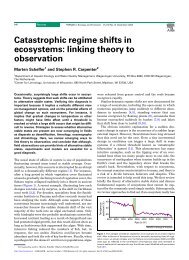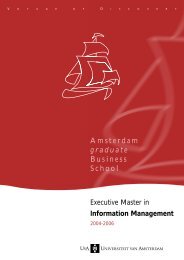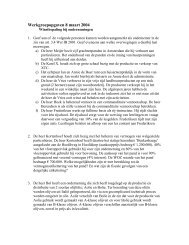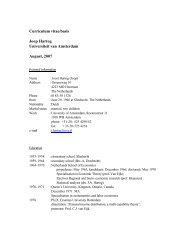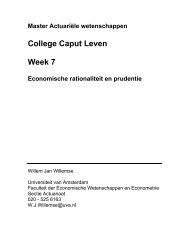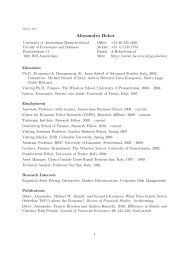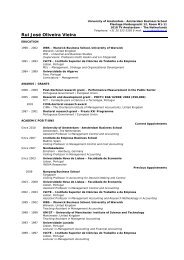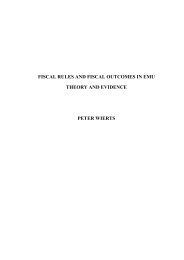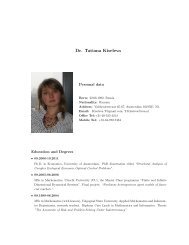How Do Corporate Venture Capitalists Create Value for ...
How Do Corporate Venture Capitalists Create Value for ...
How Do Corporate Venture Capitalists Create Value for ...
Create successful ePaper yourself
Turn your PDF publications into a flip-book with our unique Google optimized e-Paper software.
acking is of higher quality (in other words, having the ability to generate superior operating<br />
per<strong>for</strong>mance) compared to the pool of firms going public with IVC backing. We also want to conduct a<br />
similar comparison between IPOs with high and low amounts invested by CVCs. In order to study<br />
whether the pool of firms backed by CVCs is different from that of firms backed by IVCs, we use two<br />
measures: post-IPO operating per<strong>for</strong>mance and post-IPO delisting probabilities.<br />
6.1 Post-IPO Operating Per<strong>for</strong>mance<br />
We compare the operating per<strong>for</strong>mance of various IPO sub-samples using two approaches. First, we<br />
compare unadjusted operating per<strong>for</strong>mance measures <strong>for</strong> the full samples of CVC backed versus IVC<br />
backed firms, and high-CVC-investment versus low-CVC-investment firms. Second, we use a matching<br />
approach where each CVC backed (high-CVC-investment) company is matched to an IVC backed (low-<br />
CVC-investment) firm based on year, Fama and French (1997) industry, and size measured by total<br />
assets. In doing so, we ensure that each CVC backed (high-CVC-investment) company receives a unique<br />
match. We then compare the operating per<strong>for</strong>mance of the two samples of matched firms. 14<br />
To measure operating per<strong>for</strong>mance, we use the following characteristics: (1) profit margin (net<br />
income including extraordinary items (Compustat item 172) divided by sales); (2) EBITDA as a<br />
percentage of assets (Compustat item 6); (3) EBITDA sales margin; (4) return on assets (net income<br />
including extraordinary items over book value of assets); (5) share of capital expenditures (Compustat<br />
item 128) in assets; (6) share of R&D (Compustat item 46) in assets; and (7) growth in sales.<br />
Tables 5a presents our analysis of the operating per<strong>for</strong>mance of various IPO sub-samples. We report<br />
the operating per<strong>for</strong>mance characteristics <strong>for</strong> the pre-IPO year (year 0) and five years post-IPO (1 through<br />
5). Panel A provides median non-adjusted operating per<strong>for</strong>mance characteristics calculated using full IPO<br />
sub-samples. Panel B on the other hand gives statistics <strong>for</strong> the pair-matched sub-samples.<br />
14 It is important to note that, in our setting, it is inappropriate to use the matching firm approach suggested by Barber and<br />
Lyon (1996), which advocates choosing a matching (benchmark) firm based on prior profitability and size. Matching on prior<br />
profitability would be appropriate only if we wished to determine whether there is a change in operating per<strong>for</strong>mance of firms<br />
subsequent to the IPO. Since our objective here is to detect differences in the quality (per<strong>for</strong>mance) of the pool of firms going<br />
public with CVC backing and those going public with IVC backing, matching on pre-IPO operating per<strong>for</strong>mance would be<br />
inappropriate, since this is equivalent to minimizing the quality difference we are attempting to detect.<br />
21




